6 Exotic Invasive Species You Should Know About
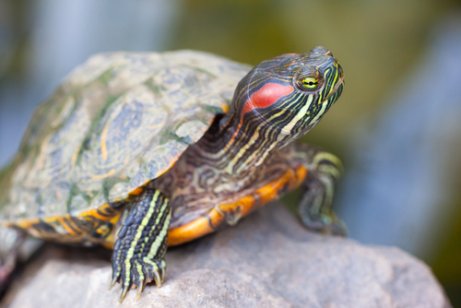
These exotic invasive species cause imbalances in the environment. They also can cause other animals or endangered species to disappear. Therefore, it’s important to know which species they are.
Although in several countries there are incredible stories of exotic invasive species, such as rabbits in Austrailia, we’re going to tell you about the best-known invasive species in Spain:
The Florida Turtle
These turtles, that are shown in the image above, belong to the genus Trachemys. They are a common exotic invasive species that are popular pets for many children. However, many owners of these turtles flush them down the toilet or release them into rivers and parks. This usually happens once the child gets tired of the animals and the parents don’t want to take on the responsibility.
These turtles live more than 20 years and increase in size, which is why many people don’t want them in their homes after a while. They have become a serious danger for Spanish rivers and lakes because they displace the European pond turtles and are quite aggressive with other species.
The Argentine and Kramer Parrots
The Kramer parrot (shown in the picture below) and the Argentine parrot are two of the most common exotic invasive species in Spain and they are able to survive in Europe easily. Irresponsible owners set them free when they want to get rid of them or sometimes they accidentally escape.
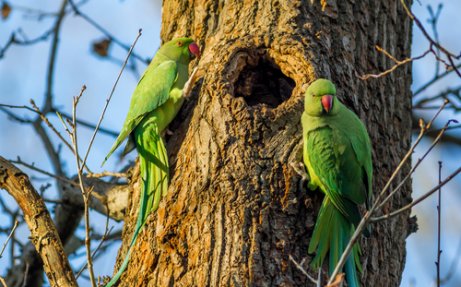
Both birds, which have green coloring, are a problem, especially in cities. In general, they cause problems because of their noise, excrement, and nests, because they live together in colonies of hundreds of birds. Also, they pose a threat to the environment, which has been an outrage for environmental groups.
In the case of the Kramer parrot, this bird is native to Africa and South Asia. It appeared in Spain for the first time in 1971. Currently, there are large numbers of this bird in cities such as Barcelona, Sevilla, Valencia, Madrid, and Murcia. However, the Argentine parrot comes from South America and there is a high population in Catalonia, Murcia, Andalusia, Galicia, and Zamora.
Coatis and Raccoons
The coati and the raccoon are other exotic invasive species in Spain. There is proof that the number of raccoons in Europe is increasing. Coati populations are also expanding, with several significant groups in Spain.
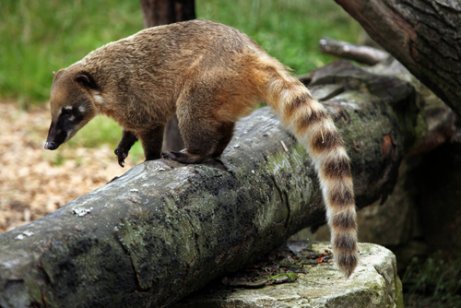
The invasion of these animals also took place due to them originally being used as pets. As the animals grow, they become more dangerous. So, many irresponsible owners abandon them. These animals have adapted quite well to the environment.
One of the biggest problems of these animals is that they’re very confident, which is why they attack. These animals also carry diseases such as rabies. Likewise, they eat the eggs of endangered native birds.
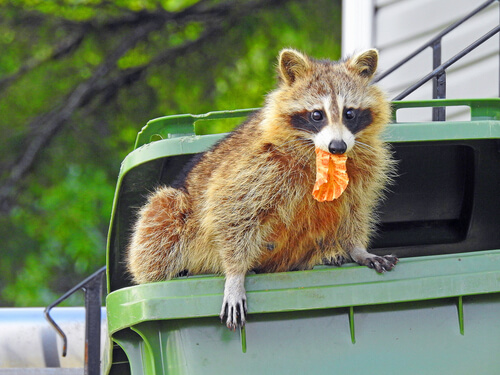
American Mink
The history of the mink is tragic: they were exported due to the fur industry in Europe and animal activists freed them into the wild. Although the activists intended to help the animals, it has significantly affected the European mink. They most likely will become extinct.
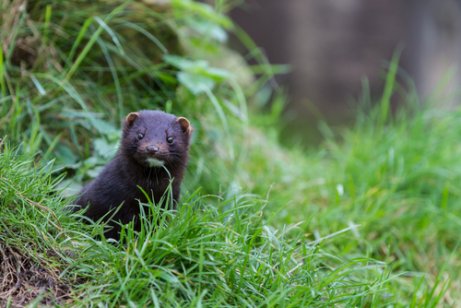
The American mink is more successful at expanding its territory. It has been forcing the European mink to leave its habitat, which reduces their chances of survival. Experts estimate there are only 500 European minks left in Spain.
The problem of exotic invasive species
Many species are declared invasive after they are released. As the years go by, more invasive species are being discovered. Therefore, it’s important to be careful and responsible with exotic pets because they can become invasive species if they are set free into the wild.
Exotic invasive species are a good example of why being an exotic pet owner is a big responsibility. Not just for the welfare of the pets, but also for the wellbeing of the wild animals in the area.
